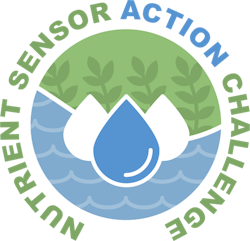Nutrient Sensor Action Challenge to improve work of nutrient sensors and analyzers
WASHINGTON, DC, MARCH 3, 2018 -- The U.S. Environmental Protection Agency (EPA) with four federal partners launched the next phase of a technology-accelerating water quality challenge calling for demonstrated use of nutrient pollution sensors.
Nutrient pollution is a widespread water quality challenge in the United States and is caused by excess nitrogen and phosphorus in the water. By demonstrating there are successful strategies for incorporating nutrient sensors into existing water monitoring and nutrient management efforts, the Challenge can help states and communities overcome the major barriers to measuring and reducing this pollution.
The Nutrient Sensor Action Challenge builds on the 2014 Nutrient Sensor Challenge, which helped facilitate the development of affordable, high-performing, continuous nutrient sensors and analyzers. In August 2017 the federal partnership launched Stage I of the Nutrient Sensor Action Challenge, which called for plans showing how these sensors could be deployed and collected data could be used to enable improved state and local nutrient management decision making. Stage I closed in September 2017 with five winning entries.
Stage II of the Challenge is now open. Competing teams will deploy and collect data from two or more nutrient sensors for at least 3 months. Teams will also demonstrate how local communities can use the collected data to improve nutrient management decisions. Stage II teams will be competing for a share of $100,000 in prizes.
The Nutrient Sensor Action Challenge is a collaboration between EPA, the United States Geological Survey (USGS), the United States Department of Agriculture (USDA), the National Institute of Standards and Technology (NIST) and the National Oceanic and Atmospheric Administration (NOAA)-led U.S. Integrated Ocean Observing System (U.S. IOOS®).
